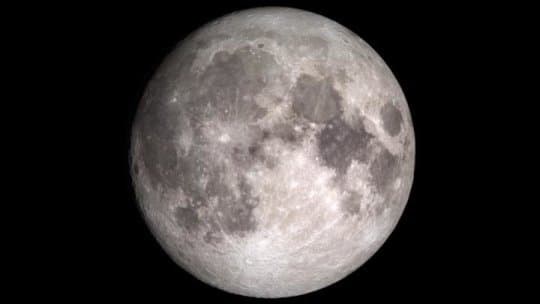
By Kerry Bennett
Office of the Vice President for Research
NAU assistant professor of planetary science Christopher Edwards co-authored a paper recently published in Nature Geoscience that has generated interest among scientists in the field as well as in mainstream science news, such as Science Daily.
The researchers analyzed remote-sensing data from two lunar missions and concluded that water appears to be evenly spread across the surface of the moon, not confined to a particular region or type of terrain as previously thought. Although the water is not believed to be readily accessible, the findings of this study could help researchers understand the origin of the moon’s water and determine its feasibility as a future resource for space exploration.
Edwards collaborated on the study, “Widespread distribution of OH/H2O on the lunar surface inferred from spectral data,” with scientists from NASA’s Jet Propulsion Laboratory and Johns Hopkins University’s Applied Physics Laboratory, as well as with lead scientist Joshua Bandfield of the Space Science Institute. The study described in the paper builds on work funded through a grant awarded to Edwards by NASA and sponsored by the Space Science Institute.
“Josh Bandfield and I are longtime collaborators,” Edwards said. “In fact, he is one of my oldest collaborators and was the lead author on the first paper I ever participated on when I was just an undergraduate. Josh and I have continued to work on similar problems, instruments and generally have the same approach to scientific problems so we work well together.”
Edwards explains how he and his collaborators used improved technology to reach their novel conclusions.
“The study uses multiple datasets—topography and temperature—to better correct the Moon Mineralogy Mapper (M3) spectral dataset,” he said. “This improved correction has led to much better constraints on the availability of H2O (water) and OH (hydroxyl, a more reactive form of water) on the moon.”
He admits he was surprised by the study’s conclusions.
“To be honest, I was a little surprised at the beginning, but by the time we had finished the paper I was completely sold,” Edwards said. “This work has been a long time coming. Josh, I and others submitted abstracts on this topic to the Lunar and Planetary Science Conference over the past couple of years.”
As part of the ongoing project, Edwards plans to bring on a new student next year who will continue to refine this technique and look at the variety of lunar terrains to help understand how this new correction helps with the interpretation of the history of lunar volatiles.
All planetary bodies are “fair game”
Although Edwards may be better known for his work studying Mars, he considers looking at other planetary bodies to be part of the job.
“As a planetary scientist, all objects in the solar system are fair game, including Earth,” he said. “In general, I spend my time thinking about the ancient environments of Mars, but in reality, I use the same techniques developed for Mars on other planetary bodies. While the questions are somewhat different, they all still play on the same theme: what do the observations we make today tell us about how a planet or moon evolved, and what it was like in the past?”
Edwards’ research focuses on the composition, physical properties and processes and morphology of planetary surfaces, with an emphasis on rocky bodies including Mars and the Earth. A major element of his research has been the design and development of infrared remote sensing instruments for use in space, the laboratory and for fieldwork. His research uses infrared spectroscopy, radiometry, laboratory spectroscopic measurements, geologic field observations and numerical modeling.
